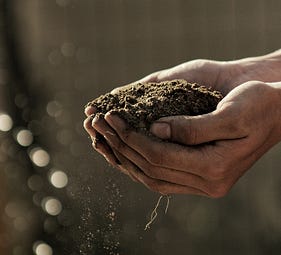Single Cultivar Kavas
This article will address a term that is becoming more and more common to see throughout the kava industry. This phrase is “Single Strain/Cultivarâ€.
The term “cultivar” is a combination of the words “cultivated” and “variety” and refers to a plant or group of plants that has been selected for its desirable characteristics and can be maintained through propagation [1]. Kava cannot be propagated generatively, meaning it cannot reproduce sexually and must be planted by hand. Therefore, each kava plant is a clone of the original. Different cultivars are created through somatic mutations, which occur in non-sexual cells and can result in varying morphotypes (visual appearance) and chemotypes (kavalactone composition). Mutations can include differences in internode height, length and color, leaf size, and chemical composition [2]. These mutations have been selectively chosen for their superior or inferior psychological effects and taste. Inferior plants were discarded, while those with superior characteristics were saved and propagated from cuttings [3]. These cuttings from superior mutations, which have been propagated for generations, are now known as cultivars. Today, this process continues, as farmers occasionally discover mutations among their crops [4].
Currently, and in the past, kava vendors would typically blend various cultivars together when creating a product. This was because multiple farms would sell their kava to a single processing facility [5]. During processing, the kava would be mixed together, resulting in the loss of cultivar identification. However, this was not necessarily a bad thing, as some of the most popular kavas on the market are blends. Nonetheless, we are now seeing more instances of exporters and vendors targeting single cultivar kavas for sale.
This is overall a positive direction for the industry however some issues do remain.
- Cleanliness – this is an issue facing the entirety of the industry. Kava was shown to have a high load of bacteria and fungi naturally [6]. As such, it is essential to ensure proper handling and cleanliness to produce high-quality products with low bacterial and fungal counts.
- Proper Identification – At present, cultivar identification in the kava industry is dependent solely on the ability of farmers, middlemen, or processing facilities to correctly identify specific cultivars. This requires the plants to be observed in their entirety or to arrive with at least one full stem with leaves attached in order to make an accurate identification. Larger processing facilities are working on implementing DNA marking for identification of cultivars, however most, if not all currently rely on the understanding of individuals to distinguish cultivar variety. This can pose a problem as many cultivars have similar visual appearances, and without adequate education, incorrectly named cultivars may be sold. After the kava is processed into powder and packaged, the accuracy of the cultivar identification can only be verified by analyzing the average chemotypes. A single cultivar kava should have consistent chemotypes even if grown in different regions [7]. For instance, if a specific kava has an accepted chemotype of 421365, the chemotype should remain close to this with only the last few digits possibly differing, such as 421356 or 423156. However, if the first three digits begin to vary, the authenticity of the claimed cultivar should be questioned. If a kava historically has been seen as a 421 or 423, but is tested at 245, there is a high likelihood that this is not the correct selection to match the named cultivar. DHM, or the kavalactone represented by the number 5, is particularly important to watch in this context. If the accepted chemotype has the #5 far to the right, but the tested chemotype has the #5 towards the left, it is likely a different kava.
As more and more people seek out single cultivar kavas, it’s crucial for everyone involved in the industry to be careful and accurate when handling and identifying the different varieties. If they’re not, this exciting new trend could fizzle out before it even gets started.
[1] Cultivar. Academic Dictionaries and Encyclopedias. (n.d.). Retrieved December 6, 2021, from https://en-academic.com/dic.nsf/enwiki/113677.
[2] Lebot, V., and J. Lèvesque. 1989. “THE ORIGIN AND DISTRIBUTION OF KAVA (PIPER METHYSTICUM FORST. F., PIPERACEAE): A PHYTOCHEMICAL APPROACH.†Allertonia 5 (2): 223–81. http://www.jstor.org/stable/23187398.
[3] Lebot Vincent, Cabalion Pierre. 1988. KAVAS OF VANUATU Cultivars of Piper Methysticum Forst. South Pacific Commission Technical Paper. https://horizon.documentation.ird.fr/exl-doc/pleins_textes/divers14-07/26842.pdf.
[4] I found a kava mutation. Kava Forums. (June 27, 2021). Retrieved December 7, 2021, from https://kavaforums.com/forum/threads/i-found-a-kava-mutation.18741/.
[5] PHAMA. 2018. FIJI KAVA VALUE CHAIN ANALYSIS. Australian Government and New Zealand Government. https://phamaplus.com.au/wp-content/uploads/2018/06/Fiji-Kava-Value-Chain-Analysis-Report-FINAL.pdf.
[6] Singh, Yadhu N. 2004. Kava: From Ethnology to Pharmacology (Medicinal and Aromatic Plants – Industrial Profiles). CRC Press.
[7] Siméoni, Patricia, and Vincent Lebot. 2002. “Identification of Factors Determining Kavalactone Content and Chemotype in Kava (Piper Methysticum Forst. F.).†Biochemical Systematics and Ecology 30 (5): 413–24. https://doi.org/10.1016/S0305-1978(01)00093-X.
Pictures of single cultivar kava plants: https://kavaforums.com/forum/attachments/vanuatu-cultivar-guide-pdf.12294/

